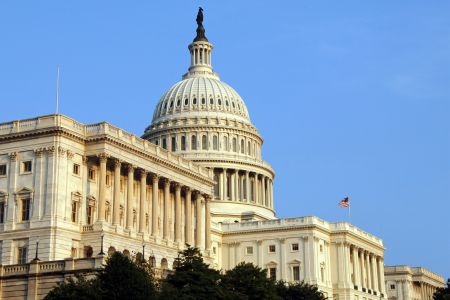Congress Takes Important First Step towards Securing the Grid

Last night, the House of Representatives approved unanimously H.R. 3410, the Critical Infrastructure Protection Act (CIPA). This legislation marks a breakthrough: For the first time in four years, Congress has acted to begin to protect the nation’s most critical of critical infrastructures: the U.S. electrical grid. It now falls to the Senate and to President Obama to ensure that the House-passed bill becomes the law of the land.
CIPA’s lead sponsors were Reps. Trent Franks (R-AZ), a senior member of the House Armed Services Committee and co-chairman of the Electromagnetic Pulse (EMP) Caucus, and Pete Sessions (R-TX), the chairman of the powerful House Rules Committee. The measure enjoyed strong bipartisan support including from the House Homeland Security Committee’s Chairman Michael McCaul (R-TX), and the Chairman and Ranking Member of the Committee’s Subcommittee on Cybersecurity, Infrastructure Protection, and Security Technologies, Reps. Patrick Meehan (R-PA) and Yvette Clark (D-NY).
The CIPA legislation requires the Department of Homeland Security to:
- include in national planning scenarios the threat of electromagnetic pulse (EMP) which would entail the education of the owners and operators of critical infrastructure, as well as emergency planners and emergency responders at all levels of government of the threat of EMP events;
- engage in research and development aimed at mitigating the consequences of naturally occurring or man-caused EMP events; and
- produce a comprehensive plan to protect and prepare the critical infrastructure of the American homeland against EMP events.
Representative Franks observed:
The U.S. electric grid is fundamental to our continued way of life and practical steps must be taken to protect those critical elements that serve the United States from all threats. The negative impacts on U.S. financial, agricultural, medical and other critical societal infrastructure are potentially catastrophic in a severe electromagnetic pulse (EMP) or severe space weather event.
By some estimates, nine out of ten Americans would perish if the power were to go off and remain off for a year’s time.
The Secure the Grid Coalition is committed to ensuring that does not happen. The Coalition is a group of national leaders in matters of defense, homeland security, solar weather, infrastructure protection and other experts who have joined forces for the purpose of achieving urgently the protection of power grid upon which the nation, its people, economy and the Department of Defense depend.
Under the honorary co-chairmanship of former House Speaker Newt Gingrich and former Clinton Director of Central Intelligence R. James Woolsey, the Secure the Grid Coalition has been active in educating lawmakers and their constituents about the nature of the various threats to the nation’s bulk power distribution system, including but not limited to EMP. Among other efforts in that regard was influential testimony provided before the House Homeland Security Committee earlier this year by two members of the Coalition: Dr. Peter Vincent Pry, of the Congressional Task Force on National and Homeland Security, and Dr. Chris Beck, Vice President of the Electric Infrastructure Protection Council.
The Center for Security Policy sponsors the Secure the Grid and its President, Frank J. Gaffney, Jr. applauded the passage of H.R. 3410 last night, saying:
Yesterday, the House of Representatives took an important first step towards protecting America’s electrical grid – and millions of its people whose lives critically depend upon it – from attack or naturally induced destruction. That planning will hopefully make clear the necessity of taking steps to secure the grid before these things happen, rather than try to cope with the consequences afterwards.
Secure the Grid Coalition members are available for comment on the passage of the Critical Infrastructure Protection Act in the House of Representatives and about the considerable work still to be done to harden the electrical grid against all hazards. More information can be found at www.securethegrid.com.
